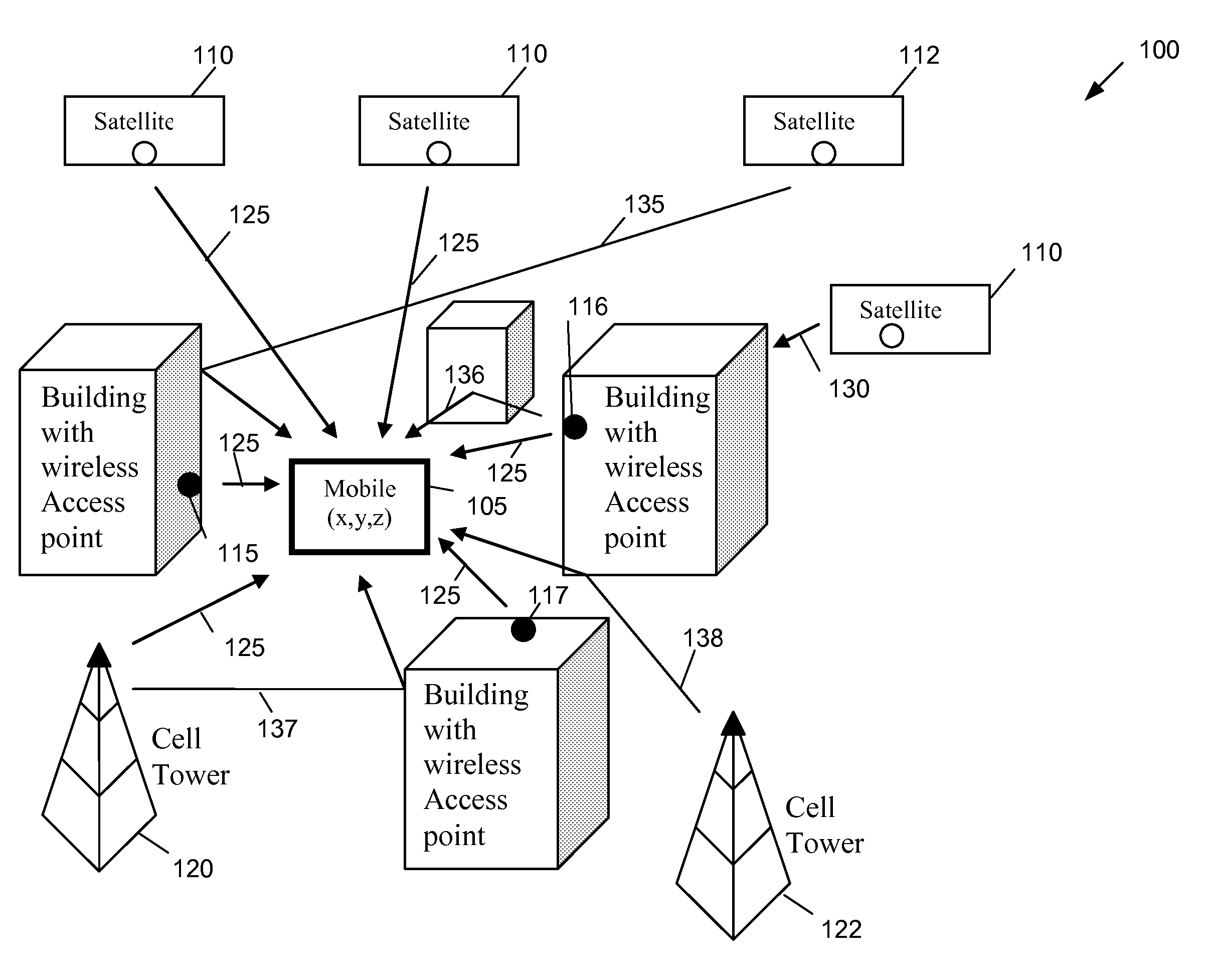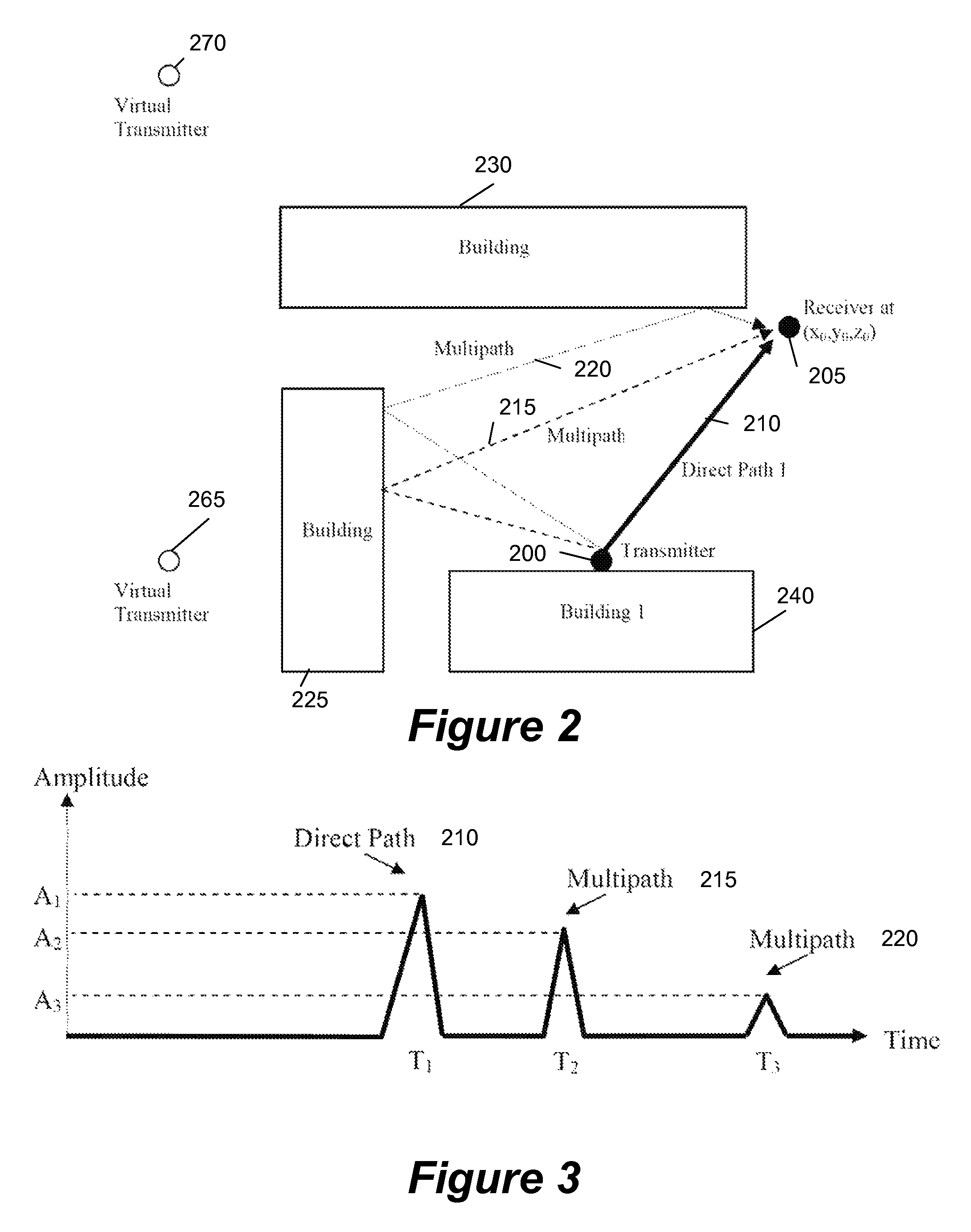Determining the position of a mobile device using the characteristics of received signals and a reference database
a mobile device and reference database technology, applied in the direction of direction finders, radio wave direction/deviation determination systems, instruments, etc., can solve the problems of multipath propagation of wireless positioning errors, signal delay and longer path to the receiver, and gps data errors,
- Summary
- Abstract
- Description
- Claims
- Application Information
AI Technical Summary
Benefits of technology
Problems solved by technology
Method used
Image
Examples
Embodiment Construction
[0032]In the following detailed description of the invention, numerous details, examples, and embodiments of the invention are set forth and described. However, it will be clear and apparent to one skilled in the art that the invention is not limited to the embodiments set forth and that the invention may be practiced without some of the specific details and examples discussed.
[0033]Some embodiments of the invention use wireless positioning methods that can work in both outdoor and indoor environments and can handle multipath propagation and indirect line of sight. Some of the methods do not use triangulation so that positioning calculation is not affected by errors caused by multipath propagation. These methods use measured channel characteristics which take multipath propagation into account, thereby overcoming the limitations of the existing technologies and systems. These methods also use existing wireless infrastructure and standards, thereby making the approach taken by these ...
PUM
 Login to View More
Login to View More Abstract
Description
Claims
Application Information
 Login to View More
Login to View More - R&D
- Intellectual Property
- Life Sciences
- Materials
- Tech Scout
- Unparalleled Data Quality
- Higher Quality Content
- 60% Fewer Hallucinations
Browse by: Latest US Patents, China's latest patents, Technical Efficacy Thesaurus, Application Domain, Technology Topic, Popular Technical Reports.
© 2025 PatSnap. All rights reserved.Legal|Privacy policy|Modern Slavery Act Transparency Statement|Sitemap|About US| Contact US: help@patsnap.com



